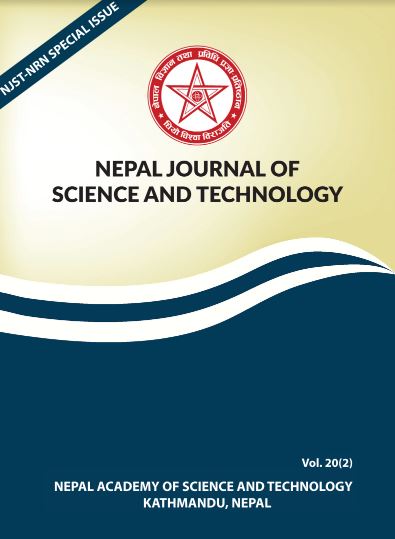Complementing Food and Nutrition Security Using Toxin Minimizing Dry Chain and Integrated Pest Management: A Review
DOI:
https://doi.org/10.3126/njst.v20i2.45804Keywords:
Mycotoxin, Pesticides, Seeds, Climate Smart, DisastersAbstract
Global programs are involved to improve food and nutrition security in the low-and middle-income countries (LMICs). Increasing agrobiodiversity by maintaining local genetic resources has been proposed to achieve food and nutrition security. However, technology to maintain local germplasms/seed stocks are not available to the smallholders. This inability to save seeds translates into 25% annual low moisture food losses to rainfall/floods. As moisture builds up in improperly stored foods, insects, and carcinogenic molds proliferate along with nutrient loss. A dry chain (drying and moisture-proof packaging) could minimize these losses and even enable disaster resiliency. About 40% high moisture foods (fruits and vegetables) are lost due to lack of the cold chain facilities. Additionally, most people in the LMICs ingest artificial toxins daily through high moisture foods due to improper pesticide use. The prevalence of health compromising food toxins in nutritious foods has been complicating malnutrition alleviation efforts in the LMICs. Adopting Integrated Pest Management (IPM) strategies followed by sensitive monitoring could reduce pesticide residues to CODEX standards and enable healthy food systems. A way forward to achieve quality food and nutrition security in the post-Covid-19 era with a particular reference to LMICs like Nepal is presented.
Downloads
Downloads
Published
How to Cite
Issue
Section
License
Copyright (c) 2021 Sundar Tiwari, Kshitij Shrestha, Meghnath Dhima, Jagadish Timsina, Krishna Belbase, Peetambar Dahal

This work is licensed under a Creative Commons Attribution-NonCommercial 4.0 International License.
Authors retain copyright and grant the journal right of first publication.




